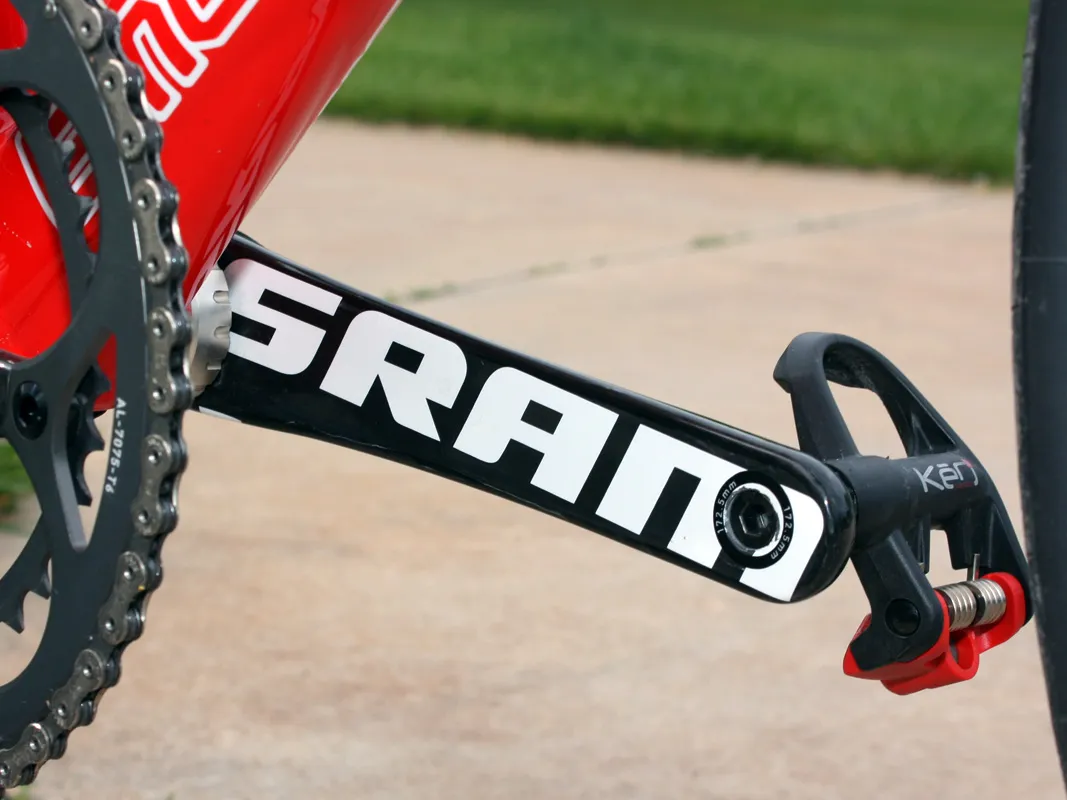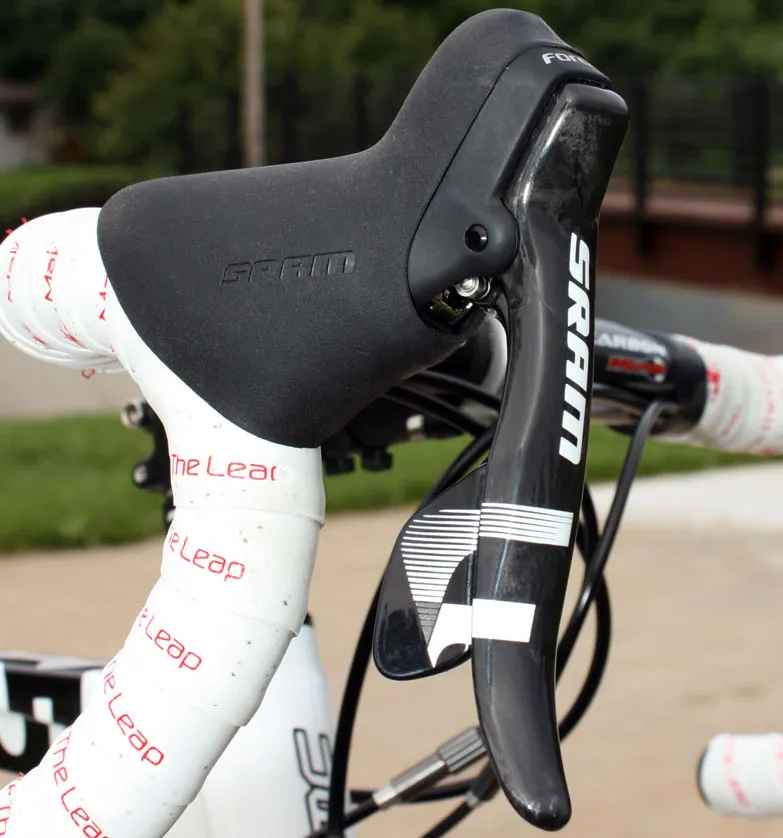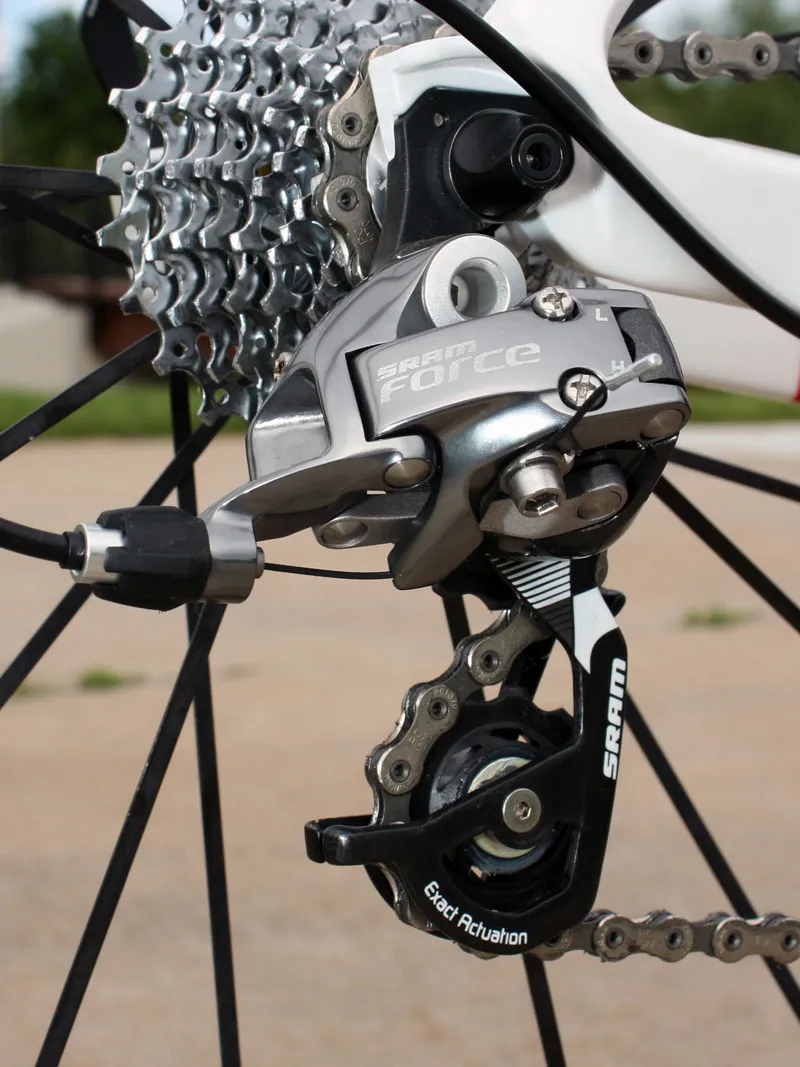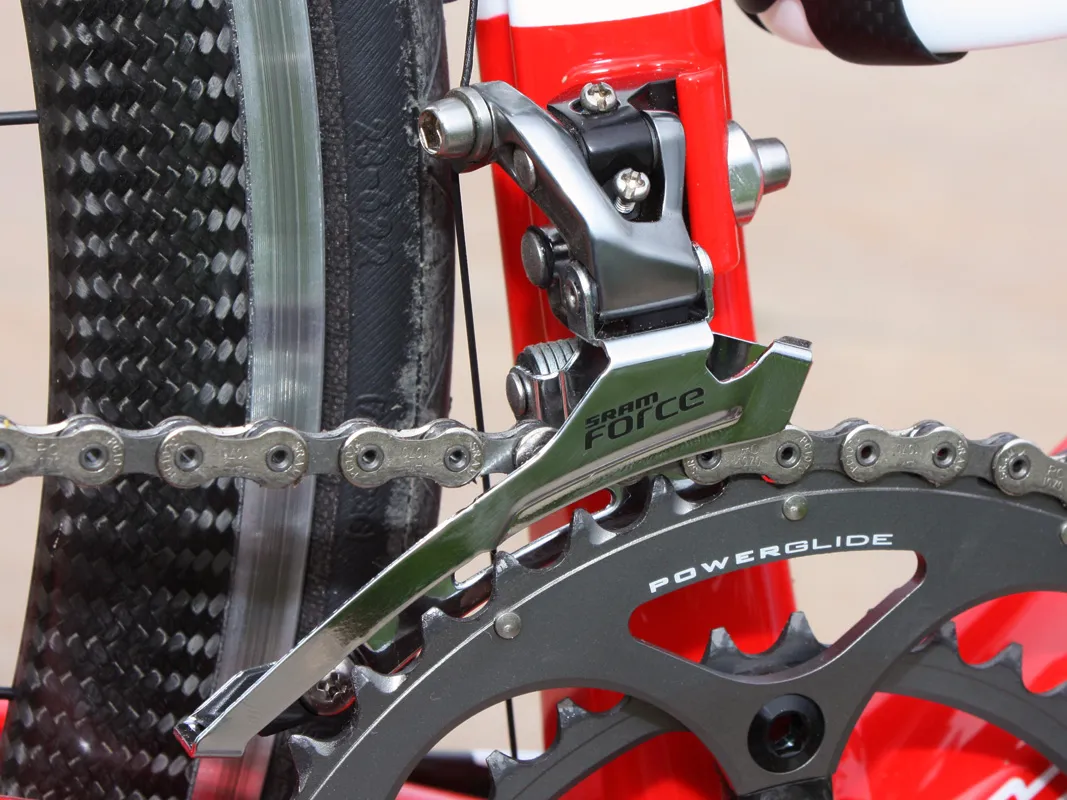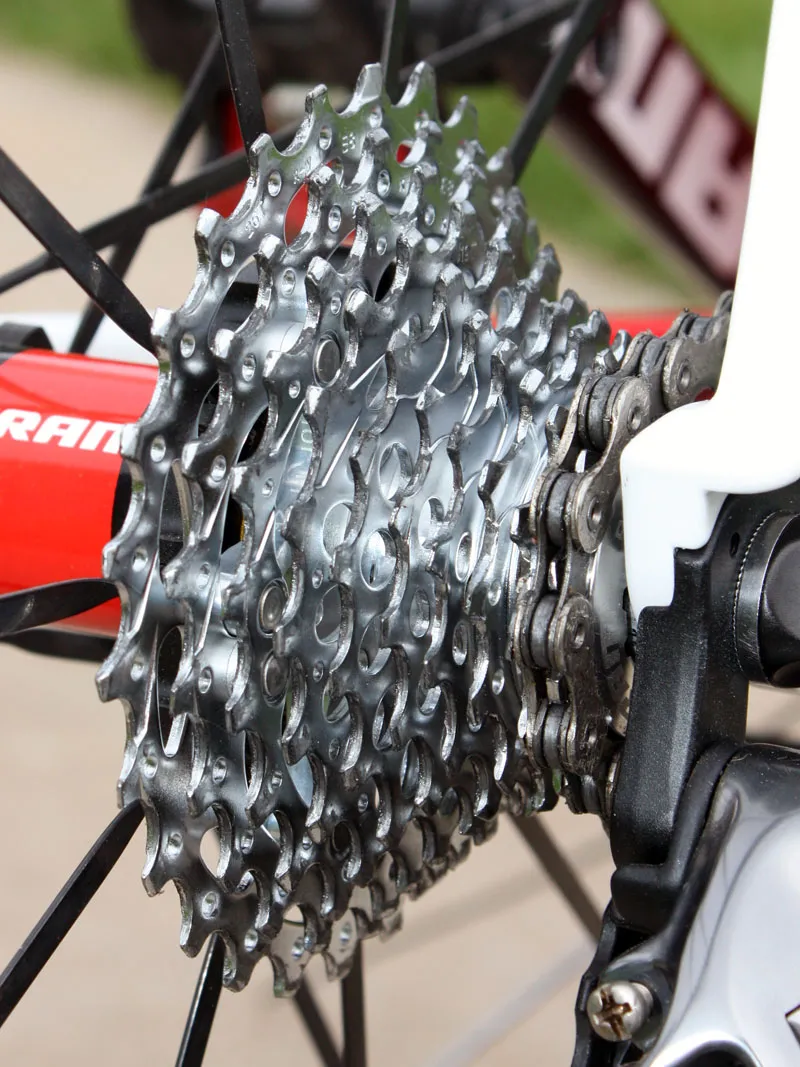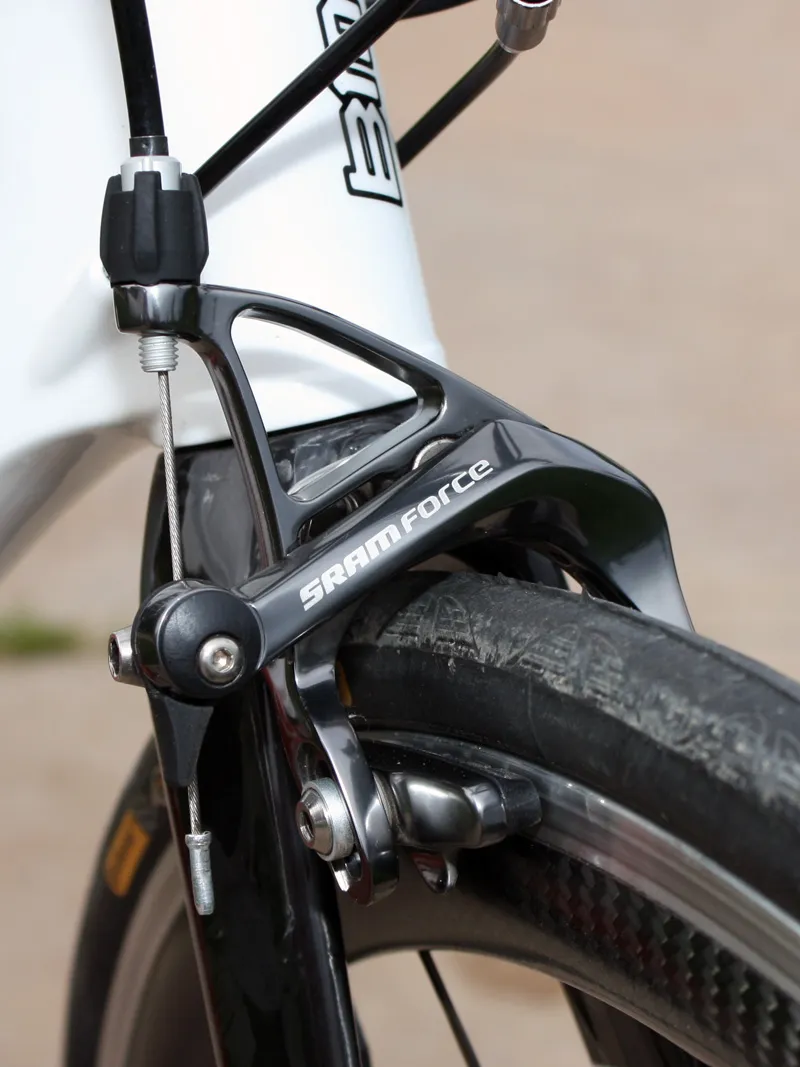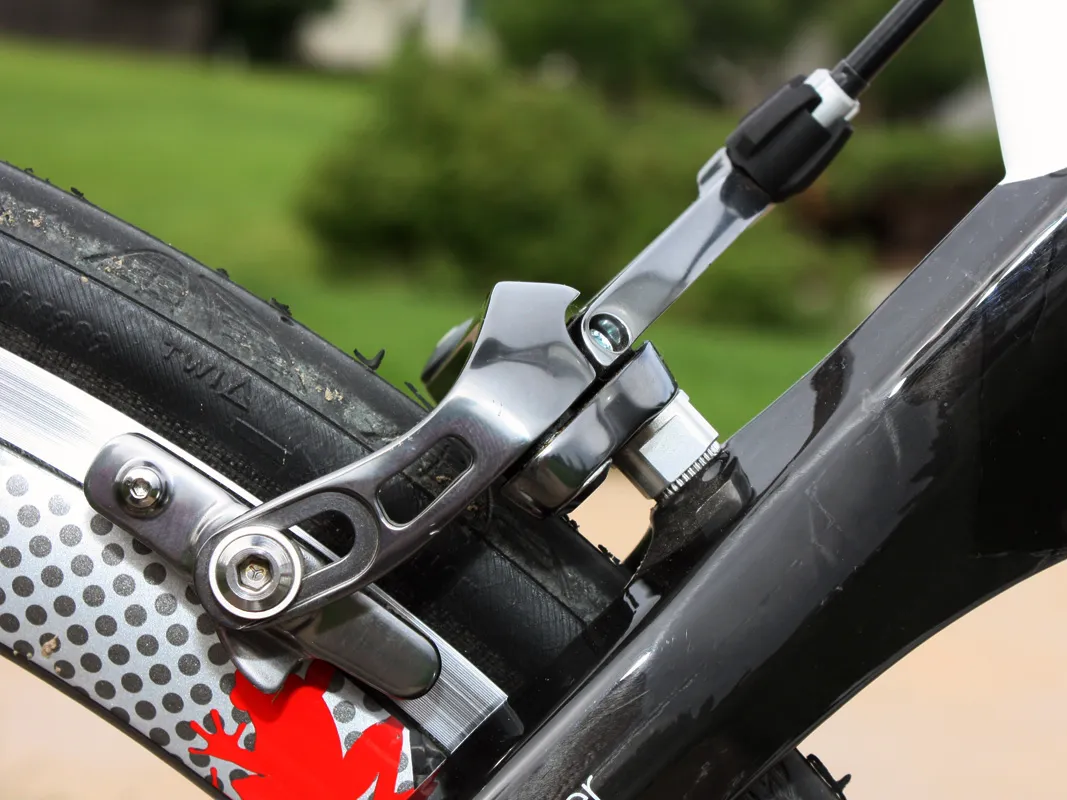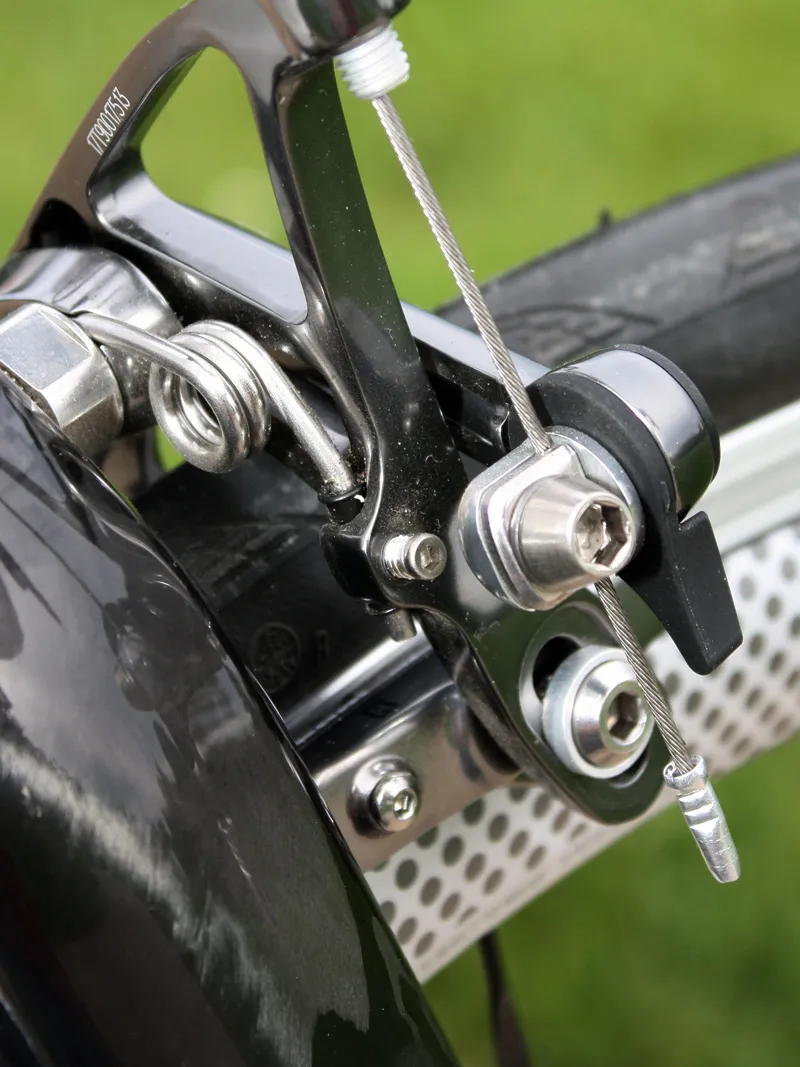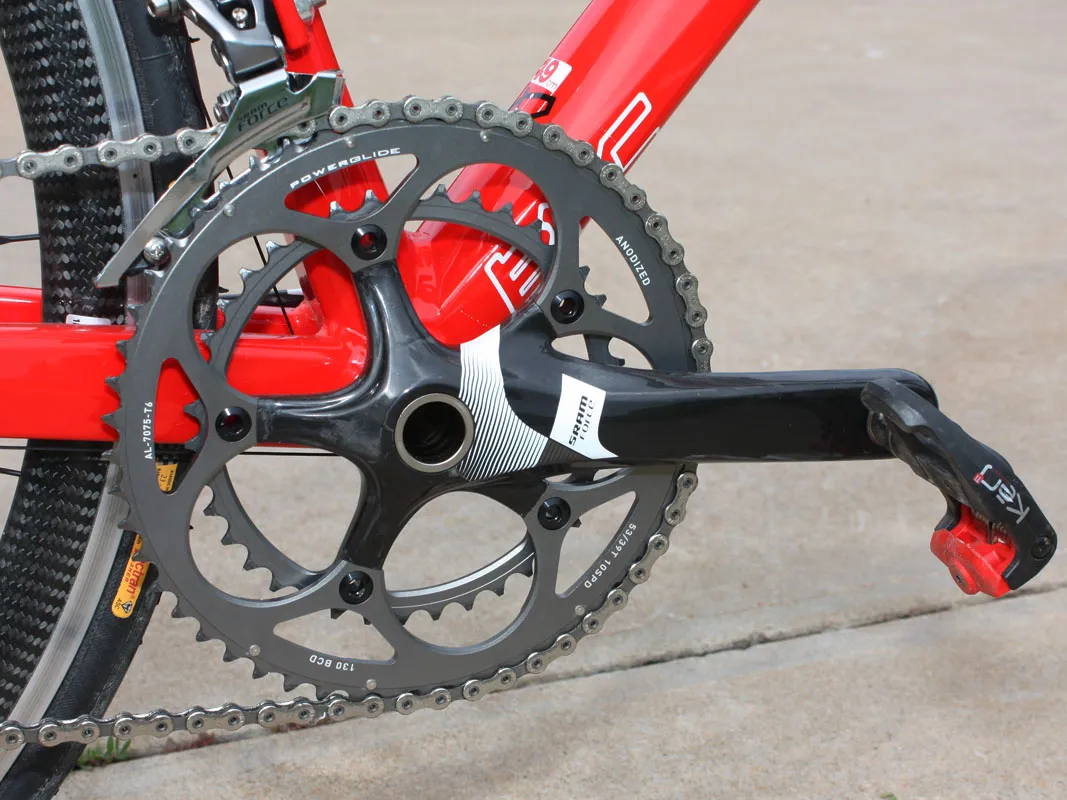SRAM's latest update of its second-tier Force group borrows so many design cues – and in fact, physical pieces – from the top-level Red package that we could practically just cut-and-paste this review after six months of testing.
While there are still a few key differences, Force is now so close to Red in look, feel and performance that there's almost no reason to move up any higher in the company's range.
Dead-ringer ergonomics and short lever throws
Lever enhancements taken from Red and introduced last year into Force have carried over with the only changes being a new unidirectional finish on the carbon brake lever blades and fresher-looking graphics.
As such, the 2010 Force levers still offer very natural-feeling ergonomics with independently reach-adjustable brake levers and shift paddles, and longer lever blades for easier braking from the drops. The shift paddles themselves are well sized, making for an intuitive target for your fingers from either the drops or hoods.
Zero-Loss shifter internals on the left-hand side yield refreshingly short lever throws when moving up to the big ring while throws on the other side are still extremely short even without Zero-Loss – aside from when you're moving out of the smallest cog, in which case the dead zone is curiously longer. Last year's refresh also moved the front trim position out to the big ring instead of the inner one.
As with all SRAM road shifters, spring tensions are reassuringly firm and there's very good tactile feedback but lever feel is still a bit tinny compared to Shimano or Campagnolo, though hardly offensive and easy to get used to. Front- or rear-of-bar derailleur cable routing makes for easier fitting (and often more hand comfort) with a wider range of bars.
Rear shift performance has been refined slightly over the original Force group, mostly on account of the updated PG-1070 cassette (the PC-1070 chain is unchanged and updates to the rear derailleur are essentially cosmetic). The new PowerGlide shaping reinserts the omitted teeth of the original OpenGlide design but with no perceivable hit in shifting speed or smoothness.
What has improved, however, is the sound quality: even with the same chain design as before, the PG-1070 cassette is noticeably quieter-running and feels a bit silkier under load, thus eliminating a major – and valid – complaint of SRAM critics.
Front shifts on our standard-drive test unit were very good overall but lacking in refinement compared to Campag. Unfortunately for SRAM, that performance gap grows even wider when compared to Shimano and their new fantastically rigid outer rings, which yield the best front shifting in the business hands-down.
SRAM seem to slowly be picking up the pace here given their new optional extra-stiff 'SPR' outer rings, though it'd be nice to see some of those improvements integrated into the standard-issue bits.
More stopping power, improved lever feel
Force's new brake calipers now get made-by-SwissStop pad inserts and use identical aluminium forgings to Red with the only main differences now being the dark grey finish and steel, rather than titanium and aluminium, hardware.
Both lever feel and overall power have improved over the already-very-good levels thanks to the stiffer and more heavily triangulated upper arm, and both panic stops and decelerations in high-speed descents are handled with competence and confidence. But again, recent advances in Shimano's braking systems put SRAM in catch-up mode.
Weight remains virtually unchanged from the previous generation but the new arms do finally gain proper centring and spring tension adjustments.
Newly added BB30 crank option
In keeping with the new group aesthetic, all updated 2010 Force crankarms get a unidirectional carbon finish and updated graphics. Standard and compact GXP versions also get a smoother shape with more rounded corners and there's still an internal alloy spine running the length of the arms.
SRAM don't say whether or not the new crank is any stiffer than the old one and we couldn't tell any appreciable difference between the two during testing. The external-type bottom bracket is carried over from before, and still has a bit more seal drag than we'd prefer.
Major change comes with the new BB30 variant, however, which lops off about 145g from the standard GXP version and is largely responsible for bringing the total Force package just below the 2kg mark.
Heel clearance is substantially improved but don't expect any monumental jump in stiffness on account of the larger-diameter spindle – the difference is very slight and unlikely to be noticed underfoot by most.
So what does this mean for Red?
Arguments between the virtues and vices of the three major component groups aside, this latest Force iteration raises interesting questions for the fate of SRAM's flagship Red package as it offers a superb weight-to-price ratio and excellent overall performance with just a handful of minor areas of improvement.
Aside from a slightly lighter weight, standard ceramic bearings and Zero Loss right-hand shifter internals, there's little motivation to upgrade and diminishing returns based on cost.
Our prediction? Red will simply move further upscale for 2011. Our bets are on a new ultralight crankset using carbon technology from new purchase Zipp, a more heavily milled-out (and smoother shifting) cassette using X-Dome features from the XX mountain bike group, and possibly some more intriguing brake calipers, too.
In the meantime, Force buyers will be well served knowing they're getting nearly all of the function and performance of the top dog at a much lower price. But if you're willing to deal with another 100g or so, SRAM's value king Rival group is almost an exact replica of Force in terms of function and around £400 cheaper.
Prices and weights:
Array